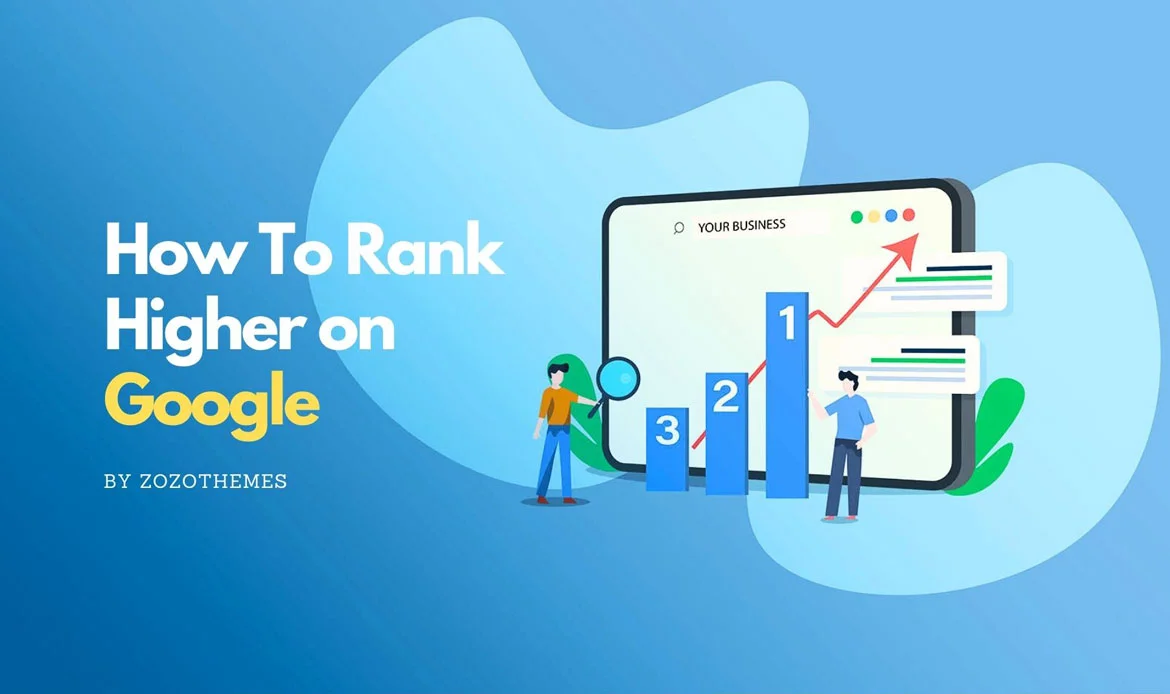Welcome to our comprehensive guide on “How to Rank Higher on Google and Dominate the SERPs.” Here, we embark on an illuminating journey through the world of Search Engine Optimization (SEO) to equip you with powerful techniques and insights that will propel your website to the top of search rankings.
In the vast digital landscape, where countless websites compete for attention, achieving a prominent position on Google’s search results can be a game-changer for any online venture. Securing a higher ranking not only drives organic traffic but also establishes credibility and trust among your target audience.
Whether you’re a seasoned digital marketer seeking to enhance your SEO prowess or a business owner striving to elevate your online visibility, this guide is designed to cater to all levels of expertise. We’ll delve into the core principles that govern Google’s ranking algorithms and reveal the tried-and-tested methods to optimize your website for search success.
Proven Strategies to Boost Your Website’s Google Rankings
What is Google Ranking?
Google Ranking refers to the position of a web page in the search results pages of Google in response to a user’s search query. When someone enters a search term or keyword into Google’s search box, the search engine algorithm evaluates and ranks various web pages based on their relevance and authority in relation to the entered query.
The goal of Google’s ranking algorithm is to provide the most relevant and valuable information to the user. Pages that are deemed to have high-quality content, relevant to the search query, and trusted by users tend to rank higher in the search results.
Various factors influence Google’s ranking algorithm, including keyword relevance, website authority, backlinks, user engagement metrics, page loading speed, mobile-friendliness, and more. Google continually updates its algorithm to improve search results and prevent manipulation, which means that website owners need to adapt their SEO strategies to maintain or improve their rankings over time.
1. Target Reasonable Keywords

The first and most important step is to target appropriate keywords. You must determine the terms you want your website to rank for, specifically focusing on the ones that align with what your ideal customers are searching for. These relevant keywords can be identified using keyword research tools.
For assistance in using Google Ads and finding relevant keywords, you can make use of WordStream’s free keyword tool.
Several factors come into play when identifying the best keywords to target for higher Google rankings: a) Relevance: It’s essential to prioritize keywords that will attract qualified traffic to your site. Targeting irrelevant keywords won’t be beneficial. b) Volume: This refers to how frequently a particular term is searched each month. c) Competition: It indicates the level of difficulty you’ll face while trying to rank for a specific keyword. d) Your domain authority: The authority of your domain influences how easily you can rank for certain keywords. If your website has been established for a considerable time and you consistently produce high-quality content, ranking becomes relatively easier.2. Improve Your On-Site SEO
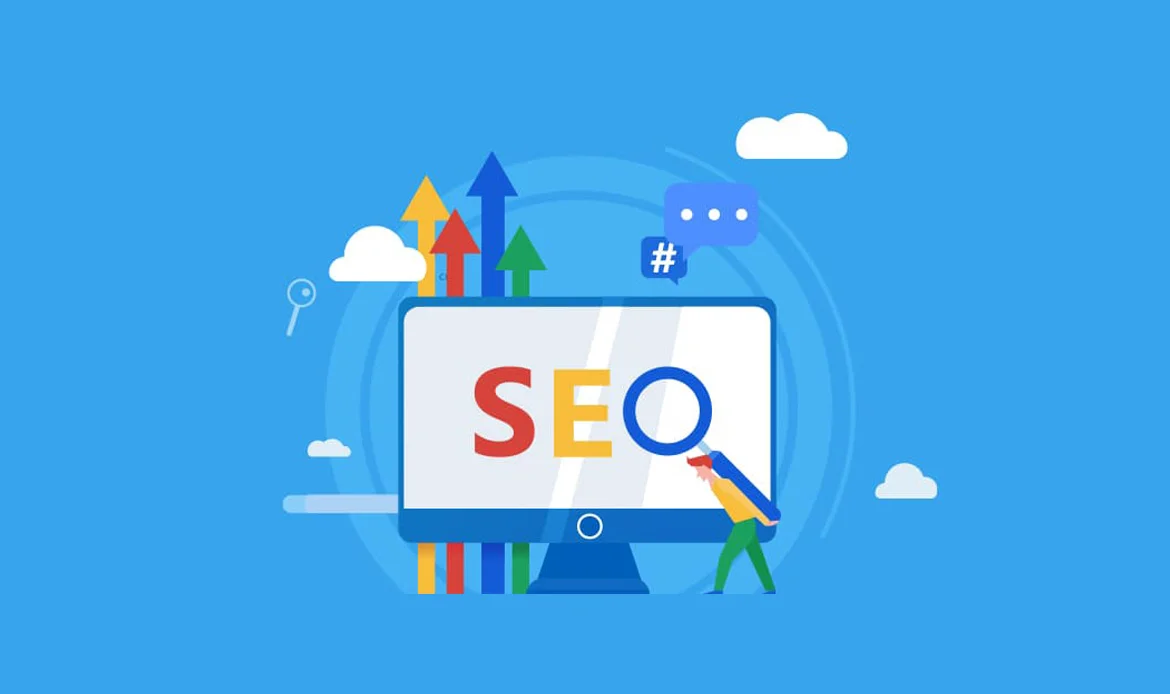 On-site SEO involves optimizing various elements within your website to make it more search engine-friendly and user-friendly. When done right, on-site SEO signals to search engines that your content is relevant, valuable, and user-oriented, thereby improving your chances of ranking higher in the SERPs.
Conduct Keyword Research:
Keyword research is the foundation of any successful on-site SEO strategy. Identify relevant keywords and key phrases that align with your content and target audience. Utilize keyword research tools to assess search volume, competition, and user intent.
Create High-Quality, Optimized Content:
Quality content is king in the world of SEO. Craft engaging, informative, and valuable content that addresses the needs and queries of your audience. Utilize your target keywords naturally throughout the content, maintaining a balance to ensure it reads naturally.
Optimize Page Titles and Meta Descriptions:
Page titles and meta descriptions are essential elements that influence click-through rates from search engine results. Create compelling and descriptive titles while incorporating relevant keywords.
Implement Header Tags and Structured Data:
Use header tags (H1, H2, H3, etc.) to organize your content hierarchically and make it easier for both users and search engines to understand your page’s structure. Additionally, consider implementing structured data (Schema.org markup) to provide search engines with more context about your content, which can lead to rich snippets in the search results.
Enhance Website Speed and Mobile Responsiveness:
Website speed and mobile responsiveness are crucial ranking factors. Optimize your site’s loading time by compressing images, leveraging browser caching, and using Content Delivery Networks (CDNs).
Create a Logical Site Structure:
Organize your website with a clear and logical site structure. Use categories and subcategories to group related content, allowing search engines to crawl and index your site more efficiently. A well-structured website enhances user navigation and improves the overall user experience.
On-site SEO involves optimizing various elements within your website to make it more search engine-friendly and user-friendly. When done right, on-site SEO signals to search engines that your content is relevant, valuable, and user-oriented, thereby improving your chances of ranking higher in the SERPs.
Conduct Keyword Research:
Keyword research is the foundation of any successful on-site SEO strategy. Identify relevant keywords and key phrases that align with your content and target audience. Utilize keyword research tools to assess search volume, competition, and user intent.
Create High-Quality, Optimized Content:
Quality content is king in the world of SEO. Craft engaging, informative, and valuable content that addresses the needs and queries of your audience. Utilize your target keywords naturally throughout the content, maintaining a balance to ensure it reads naturally.
Optimize Page Titles and Meta Descriptions:
Page titles and meta descriptions are essential elements that influence click-through rates from search engine results. Create compelling and descriptive titles while incorporating relevant keywords.
Implement Header Tags and Structured Data:
Use header tags (H1, H2, H3, etc.) to organize your content hierarchically and make it easier for both users and search engines to understand your page’s structure. Additionally, consider implementing structured data (Schema.org markup) to provide search engines with more context about your content, which can lead to rich snippets in the search results.
Enhance Website Speed and Mobile Responsiveness:
Website speed and mobile responsiveness are crucial ranking factors. Optimize your site’s loading time by compressing images, leveraging browser caching, and using Content Delivery Networks (CDNs).
Create a Logical Site Structure:
Organize your website with a clear and logical site structure. Use categories and subcategories to group related content, allowing search engines to crawl and index your site more efficiently. A well-structured website enhances user navigation and improves the overall user experience.
3. Monitor Your Technical SEO
 Technical SEO involves the optimization of various backend elements of your website to enhance its search engine crawlability, indexability, and overall user experience. By fine-tuning technical aspects, you can ensure that search engine bots can efficiently access and understand your content, leading to higher rankings in search results and improved user satisfaction.
Conduct Regular Website Audits:
Performing regular website audits is a fundamental step in monitoring your technical SEO. Use specialized tools to assess your site’s health, identifying potential issues such as broken links, duplicate content, and crawl errors. Addressing these concerns promptly can prevent them from negatively impacting your rankings and user experience.
Optimize Website Structure and Navigation:
A logical and organized website structure is crucial for both search engines and users. Create a clear hierarchy with categories and subcategories, facilitating easy navigation and content discovery. Ensure that your website’s internal linking is efficient and relevant, allowing search engines to discover and index your content more effectively.
Validate and Optimize HTML/XML Sitemaps:
HTML and XML sitemaps are invaluable tools for search engines to crawl and understand the structure of your website. Regularly validate your sitemaps to ensure they are error-free and up-to-date. Submit them to Google Search Console and other search engine webmaster tools to aid in indexation and improve your website’s visibility.
Implement HTTPS and Ensure Security:
Google prioritizes secure websites with HTTPS encryption. Secure sockets layer (SSL) certificates are essential for protecting user data and building trust with your audience. Monitor your website’s security regularly and ensure that all pages, especially those handling sensitive information, are appropriately encrypted.
Regularly Check for Crawling and Indexing Issues:
Regularly monitor Google Search Console and other webmaster tools for crawling and indexing issues. Detect and resolve any problems that may prevent search engine bots from accessing and indexing your pages, ensuring that your content is visible in search results.
Technical SEO involves the optimization of various backend elements of your website to enhance its search engine crawlability, indexability, and overall user experience. By fine-tuning technical aspects, you can ensure that search engine bots can efficiently access and understand your content, leading to higher rankings in search results and improved user satisfaction.
Conduct Regular Website Audits:
Performing regular website audits is a fundamental step in monitoring your technical SEO. Use specialized tools to assess your site’s health, identifying potential issues such as broken links, duplicate content, and crawl errors. Addressing these concerns promptly can prevent them from negatively impacting your rankings and user experience.
Optimize Website Structure and Navigation:
A logical and organized website structure is crucial for both search engines and users. Create a clear hierarchy with categories and subcategories, facilitating easy navigation and content discovery. Ensure that your website’s internal linking is efficient and relevant, allowing search engines to discover and index your content more effectively.
Validate and Optimize HTML/XML Sitemaps:
HTML and XML sitemaps are invaluable tools for search engines to crawl and understand the structure of your website. Regularly validate your sitemaps to ensure they are error-free and up-to-date. Submit them to Google Search Console and other search engine webmaster tools to aid in indexation and improve your website’s visibility.
Implement HTTPS and Ensure Security:
Google prioritizes secure websites with HTTPS encryption. Secure sockets layer (SSL) certificates are essential for protecting user data and building trust with your audience. Monitor your website’s security regularly and ensure that all pages, especially those handling sensitive information, are appropriately encrypted.
Regularly Check for Crawling and Indexing Issues:
Regularly monitor Google Search Console and other webmaster tools for crawling and indexing issues. Detect and resolve any problems that may prevent search engine bots from accessing and indexing your pages, ensuring that your content is visible in search results.
4. Examine the keyword intent
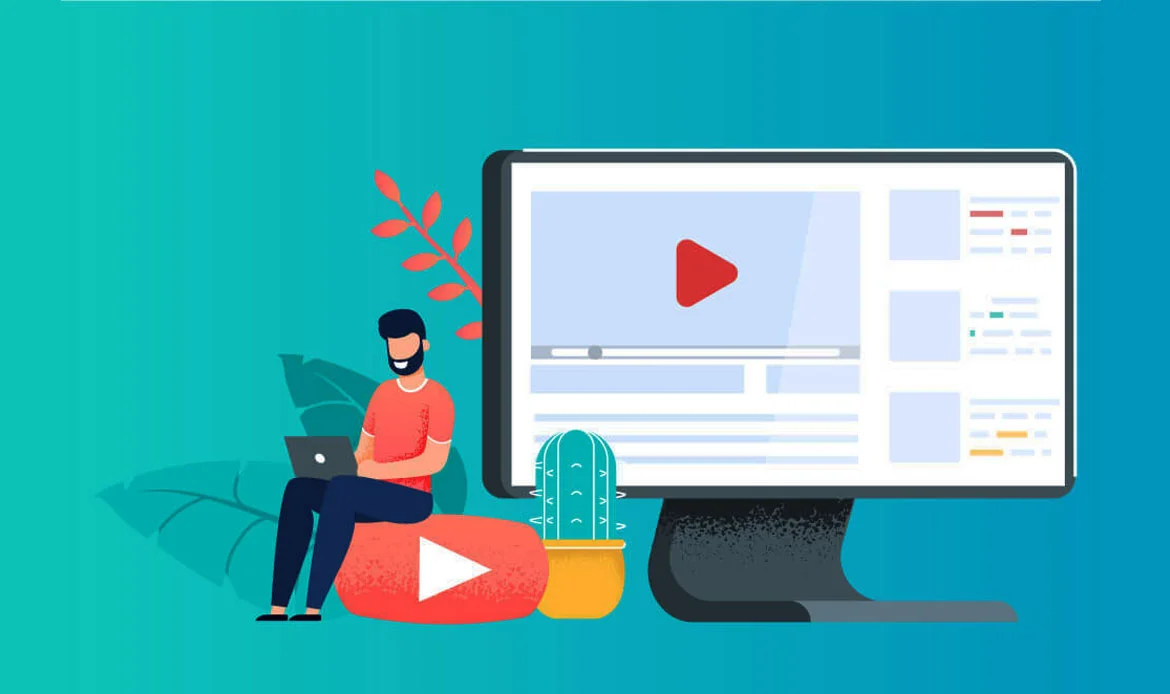 Before delving into keyword intent, it’s essential to recognize the four main categories: informational, commercial, transactional, and navigational. Each type reflects the user’s underlying motivation when conducting a search query. For effective SEO, we focus primarily on informational intent keywords, as they signify users seeking valuable information, answers, or insights on a specific topic.
Before delving into keyword intent, it’s essential to recognize the four main categories: informational, commercial, transactional, and navigational. Each type reflects the user’s underlying motivation when conducting a search query. For effective SEO, we focus primarily on informational intent keywords, as they signify users seeking valuable information, answers, or insights on a specific topic.
Why Keyword Intent Matters for SEO:
Understanding keyword intent is crucial for SEO success. By identifying the intent behind popular search queries, you can tailor your content to match the user’s expectations and deliver relevant, valuable information. This alignment increases the likelihood of ranking higher on Google and gaining visibility among your target audience.Drilling Down into Informational Intent Keywords:
Even within the realm of informational intent keywords, a deeper level of analysis is required. It is crucial to decipher precisely what type of information the user is seeking. For instance, certain keywords may have diverse interpretations, catering to various user segments. By conducting thorough keyword research and examining search results, you can select the most relevant and targeted keywords for your content.Keyword Intent and Content Strategy Alignment:
Once you’ve identified the informational intent keywords most relevant to your content, it’s time to align your content strategy accordingly. Craft informative and valuable articles, blog posts, or guides that address the specific information users seek when using those keywords.Avoiding Misalignment Pitfalls:
Attempting to target keywords with incorrect or mismatched intent can lead to missed opportunities and ineffective SEO efforts. The example of targeting a keyword like “website ideas” for showcasing website screenshots illustrates the importance of understanding user intent accurately. Avoid such pitfalls by refining your keyword research and ensuring your content addresses the precise needs of your target audience.5. Focusing on Long-Tail, Question Keywords
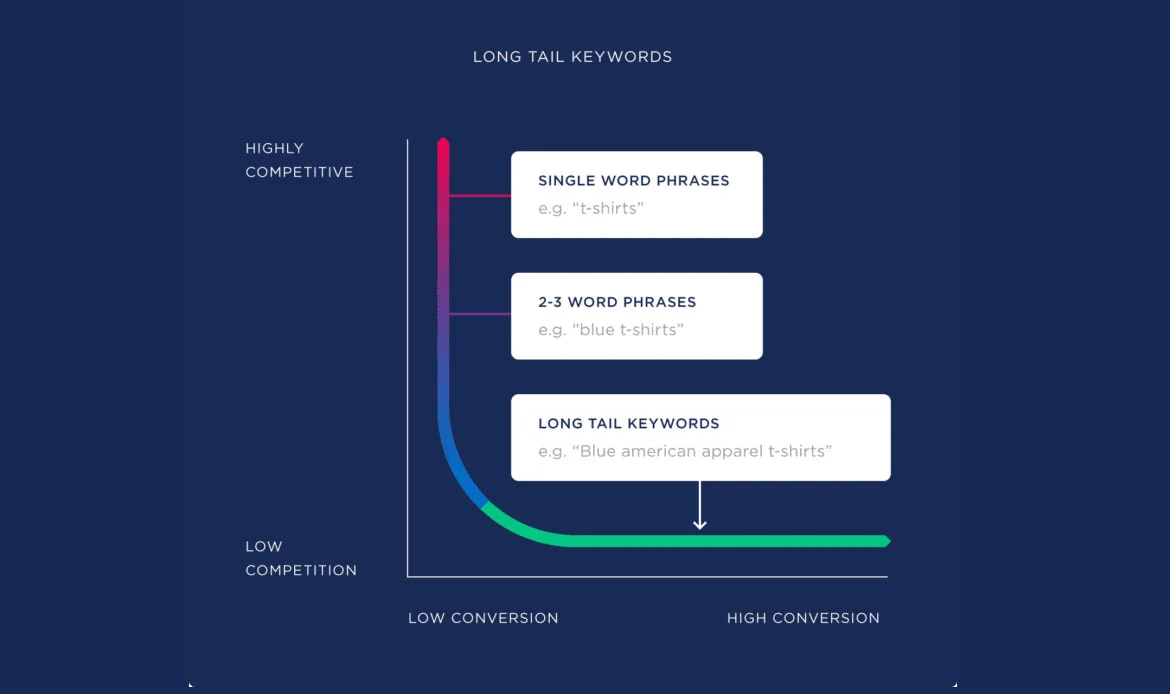 In the pursuit of higher rankings on Google and establishing online dominance, selecting the right keywords is paramount. While conventional short-tail keywords have their place, strategically incorporating long-tail and question keywords into your SEO arsenal can prove to be a game-changer.
Long-tail keywords are more specific and detailed search phrases that reflect users’ specific queries, while question keywords are directly phrased as questions. Unlike broad short-tail keywords, these specialized search terms offer valuable insights into user intent, enabling you to cater directly to users seeking precise information or solutions. Understanding their power is crucial to optimizing your content for greater search engine visibility.
By understanding their unique advantages and integrating them into your content strategy, you can unlock a wealth of untapped opportunities, drive targeted traffic, and solidify your position as a leading authority in your niche.
In the pursuit of higher rankings on Google and establishing online dominance, selecting the right keywords is paramount. While conventional short-tail keywords have their place, strategically incorporating long-tail and question keywords into your SEO arsenal can prove to be a game-changer.
Long-tail keywords are more specific and detailed search phrases that reflect users’ specific queries, while question keywords are directly phrased as questions. Unlike broad short-tail keywords, these specialized search terms offer valuable insights into user intent, enabling you to cater directly to users seeking precise information or solutions. Understanding their power is crucial to optimizing your content for greater search engine visibility.
By understanding their unique advantages and integrating them into your content strategy, you can unlock a wealth of untapped opportunities, drive targeted traffic, and solidify your position as a leading authority in your niche.
6. Include meaningful visuals
 Visuals have a unique ability to convey information, evoke emotions, and enhance the overall user experience. From stunning imagery to informative infographics, visual content adds depth and richness to your website’s pages, making them more appealing to both users and search engines.
Incorporating relevant and eye-catching visuals can captivate your audience from the moment they land on your site. Whether you’re showcasing your products, presenting data in an easily digestible format, or illustrating complex concepts, meaningful visuals help convey your message effectively, increasing the likelihood of users staying on your page longer.
Google considers user engagement metrics as an essential factor in its ranking algorithm. By including compelling visuals, you encourage visitors to spend more time on your site, reducing bounce rates, and increasing dwell time. These positive user signals send a strong message to search engines, indicating that your content is valuable and engaging.
Visuals have a unique ability to convey information, evoke emotions, and enhance the overall user experience. From stunning imagery to informative infographics, visual content adds depth and richness to your website’s pages, making them more appealing to both users and search engines.
Incorporating relevant and eye-catching visuals can captivate your audience from the moment they land on your site. Whether you’re showcasing your products, presenting data in an easily digestible format, or illustrating complex concepts, meaningful visuals help convey your message effectively, increasing the likelihood of users staying on your page longer.
Google considers user engagement metrics as an essential factor in its ranking algorithm. By including compelling visuals, you encourage visitors to spend more time on your site, reducing bounce rates, and increasing dwell time. These positive user signals send a strong message to search engines, indicating that your content is valuable and engaging.
7. Publish High-Quality & long-form Content
 Google’s search algorithms increasingly favor high-quality content that offers value to users. When you create content that educates, informs, entertains, or solves problems, you not only attract a loyal audience but also gain recognition from search engines, leading to improved rankings.
Google’s search algorithms increasingly favor high-quality content that offers value to users. When you create content that educates, informs, entertains, or solves problems, you not only attract a loyal audience but also gain recognition from search engines, leading to improved rankings.
Long-Form Content’s Impact on SEO:
While shorter articles still have their place, long-form content—typically exceeding 1,500 words—has proven to be a potent SEO tool. Google recognizes long-form articles as more comprehensive and authoritative, making them more likely to rank higher in search results for relevant keywords.Captivating Your Audience with Depth and Detail:
Long-form content allows you to delve deeper into a topic, providing your audience with valuable insights and in-depth knowledge. By thoroughly covering a subject, you establish yourself as a credible source, encouraging users to spend more time on your site, and reducing bounce rates—an essential factor in Google’s ranking algorithm.Targeting Multiple Keywords:
In longer articles, you have the opportunity to naturally incorporate a broader range of relevant keywords. This practice can improve your chances of ranking for various long-tail and related keywords, attracting diverse organic traffic to your website.8. Cultivate Backlinks for Your Webpage
 Backlinks, also known as inbound links or incoming links, are links from other websites that direct users to your site. In the eyes of search engines, backlinks serve as “votes” of confidence, indicating that your content is valuable and authoritative. The more high-quality backlinks your site earns, the more Google considers it as a reliable resource, resulting in improved rankings.
Backlinks, also known as inbound links or incoming links, are links from other websites that direct users to your site. In the eyes of search engines, backlinks serve as “votes” of confidence, indicating that your content is valuable and authoritative. The more high-quality backlinks your site earns, the more Google considers it as a reliable resource, resulting in improved rankings.
Quality over Quantity:
While the number of backlinks was once a primary metric, Google’s algorithm now prioritizes quality over quantity. Backlinks from authoritative and relevant websites carry more weight in boosting your SEO rankings. Focus on securing links from trustworthy sources in your niche to build a strong backlink profile.Monitor and Disavow Unwanted Links:
Regularly monitor your backlink profile to ensure it remains healthy and free from harmful links. In case of spammy or low-quality backlinks, utilize Google’s Disavow Tool to request that these links be discounted from your site’s ranking calculations.9. Minimize Your Website’s Bounce Rate
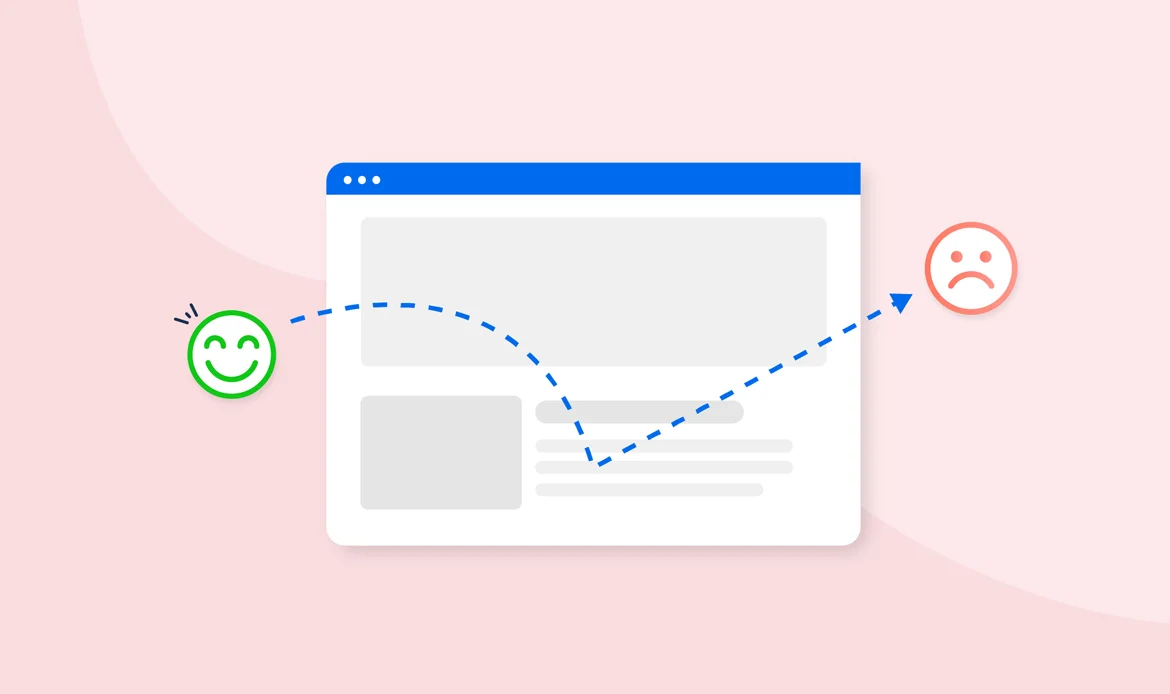 The bounce rate measures the percentage of visitors who leave your website after viewing only one page, without engaging further or interacting with your content. A high bounce rate indicates that visitors are not finding what they are looking for or are dissatisfied with their experience, potentially negatively affecting your search rankings.
Google considers user engagement metrics, including the bounce rate, as important indicators of a website’s relevancy and quality. A high bounce rate can signal to search engines that your content is not meeting users’ needs or expectations, resulting in lower rankings in SERPs.
To reduce your bounce rate, focus on enhancing user experience across your website. Ensure your site is visually appealing, easy to navigate, and loads quickly. Provide clear calls-to-action (CTAs) and make it simple for visitors to find relevant content.
The bounce rate measures the percentage of visitors who leave your website after viewing only one page, without engaging further or interacting with your content. A high bounce rate indicates that visitors are not finding what they are looking for or are dissatisfied with their experience, potentially negatively affecting your search rankings.
Google considers user engagement metrics, including the bounce rate, as important indicators of a website’s relevancy and quality. A high bounce rate can signal to search engines that your content is not meeting users’ needs or expectations, resulting in lower rankings in SERPs.
To reduce your bounce rate, focus on enhancing user experience across your website. Ensure your site is visually appealing, easy to navigate, and loads quickly. Provide clear calls-to-action (CTAs) and make it simple for visitors to find relevant content.
10. Craft Compelling Meta Titles to Attract Clicks
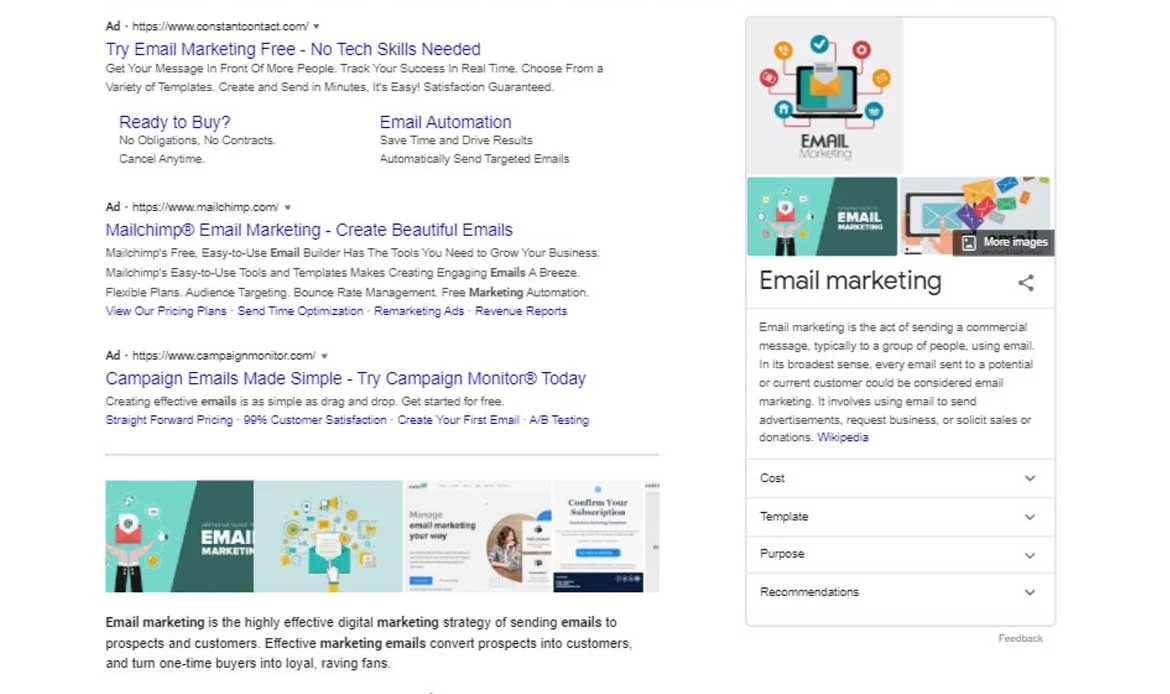 Meta titles, also known as title tags, are concise snippets of text that appear as the clickable headline in search engine results. These titles provide users with a glimpse of what to expect on the page and play a vital role in attracting clicks.
A well-crafted meta title has the power to stand out amidst a sea of search results, compelling users to choose your link over others. By enticing users with an intriguing title that addresses their needs and interests, you increase the likelihood of clicks and improve your search rankings.
Meta titles, also known as title tags, are concise snippets of text that appear as the clickable headline in search engine results. These titles provide users with a glimpse of what to expect on the page and play a vital role in attracting clicks.
A well-crafted meta title has the power to stand out amidst a sea of search results, compelling users to choose your link over others. By enticing users with an intriguing title that addresses their needs and interests, you increase the likelihood of clicks and improve your search rankings.
Injecting Unique Selling Propositions (USPs):
Include unique selling propositions in your meta titles to differentiate your content from competitors. Showcase what sets your content apart and highlight the benefits users can expect from clicking through to your page.Evoking Emotion and Interest:
Emotional appeal can be a powerful tool in attracting clicks. Use action-oriented language, questions, or evocative words to spark curiosity and interest in users.A/B Testing and Optimization:
Continuously test and optimize your meta titles to gauge their performance. A/B testing different variations can help identify which titles resonate best with your audience and lead to higher click-through rates.11. Format Your Information for Quick Understanding

In today’s fast-paced digital world, users demand instant access to information. Formatting your content for quick understanding is essential to cater to short attention spans and ensure that users can extract the desired information efficiently.
Structured content with clear and descriptive headings aids users in navigating through your article seamlessly. Well-crafted headings offer an overview of each section’s content, allowing readers to locate specific information quickly.
Integrating relevant images, infographics, or charts alongside text can enhance comprehension and engagement. Visual aids provide an additional layer of understanding and appeal to visual learners.
Lengthy paragraphs and complex sentence structures can overwhelm readers. Aim for short paragraphs and sentences that convey information clearly and concisely, making it easier for users to grasp your content.
For longer articles or guides, include a table of contents at the beginning. A well-organized table of contents allows users to jump to specific sections without scrolling extensively.
Frequently Asked Questions About Ranking Higher on Google
What are the most important factors for ranking higher on Google?
The key ranking factors include high-quality content, relevant keywords, strong backlinks, mobile-friendly design, fast page loading speed, and user engagement signals like low bounce rates and longer session durations.
How long does it take to see results from SEO efforts?
Typically, SEO improvements take between 3 to 6 months to show noticeable results, depending on competition, content quality, and domain authority. Consistency in optimization and regular content updates are essential for long-term success.
Can I rank higher without paid advertising?
Yes, you can achieve higher rankings organically through effective SEO practices like optimizing content, earning backlinks, improving technical SEO, and enhancing user experience. Paid ads can complement but aren’t necessary for ranking improvement.
Conclusion
In conclusion, mastering the art of ranking higher on Google and dominating the SERPs requires a harmonious blend of knowledge, dedication, and adaptability. Through our comprehensive guide, we have explored the intricate world of SEO and uncovered the essential strategies that can elevate your website’s visibility and propel it to new heights of success.
We have learned that SEO is not a one-time endeavor but an ongoing process that demands vigilance and continuous improvement. Staying ahead in the digital race requires staying abreast of the latest algorithm updates, user behavior trends, and emerging technologies. Embracing a data-driven approach and conducting regular audits will empower you to fine-tune your SEO efforts and maintain a competitive edge.
Boost Your Visibility and Outrank the Competition Today!
Start dominating the SERPs today — implement these strategies with the right themes, tools, and SEO techniques to grow your online presence in 2025!

